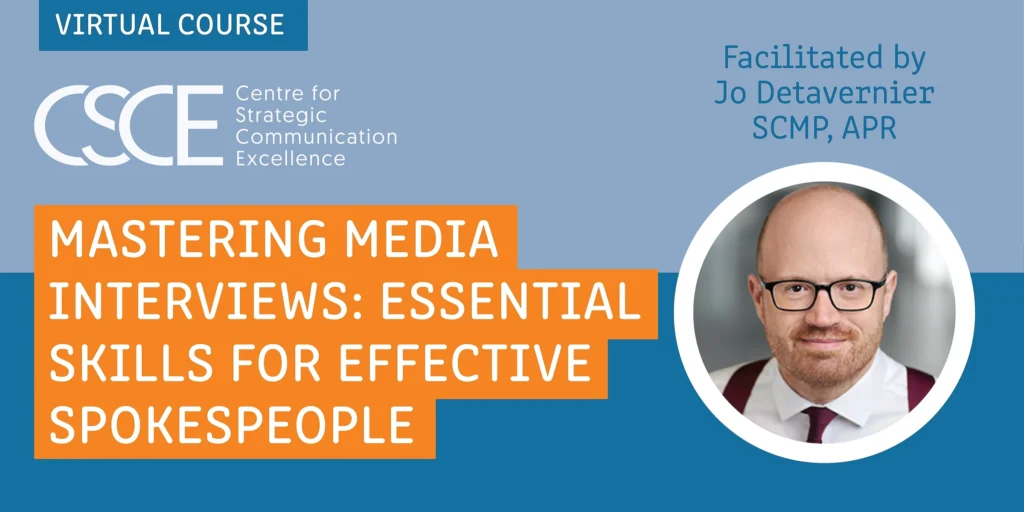
Creating a champion network can be one of the most transformative ways to strengthen internal communication and boost engagement. From my own experience working with various organisations, these networks have the power to ignite positive change. However, success hinges on more than just selecting the right individuals—it requires fostering a community of influencers who inspire and support colleagues across the business.
In this final part of our three-part series, I’m joined once again by Howard Krais, co-founder of True, to discuss how to build champion networks that truly amplify engagement and drive meaningful change. Howard shares his insights on identifying champions, supporting their development, and harnessing their influence to lead large-scale initiatives. Champion networks play a crucial role in creating a culture where employees feel empowered and connected, and today we’ll dive into how to ensure their success.
Sia: What are the essential qualities you seek when identifying champions within an organisation, and how can they drive broader engagement?
Howard: First and foremost, you need to be clear on why you think a champion network is the right thing solution. Too often, we hear stories of people being brought together into a ‘champions’ group where, ultimately, nothing happens. This leads to disappointment at the local level and, in some cases, reinforces the perception that the organisation isn’t genuinely committed to listening or collaborating with local colleagues.
That said, champion networks can be an excellent way to foster local support, particularly for small central teams. They provide a valuable opportunity to both deliver and listen across the organisation. Once you’ve decided to move forward with creating one, the next step is identifying the right people.
I’d suggest there isn’t just one specific type of person. Indeed, you can find potential ‘champions’ as individuals who exhibit a range of traits. These might include:
- A genuine interest in the business, whether locally or across the enterprise.
- Someone recognised as a local influencer, who enjoys collaborating with and supporting their colleagues.
- Someone whose role involves formal or informal communication or engagement with peers.
- A desire for personal and professional development.
- A commitment to contributing not just for local benefit, but for the broader organisation
- Someone seeking personal development opportunities.
Sia: What strategies can communication professionals use to keep champions motivated and aligned with organisational goals over time?
Howard: In my view there are three key strategies to ensure long-term engagement and motivation:
- Create a true community: Don’t treat your champion network as just another channel. Instead, nurture it like an extension of your own team. Foster a sense of belonging and shared purpose. Work hard to understand individual motivations, help them feel they are contributing to shared success and provide opportunities for network members to connect with leaders and other interesting people from across the organisation.
- Understand personal success factors: Whether they volunteer or are ‘voluntold’, champions will have their own reasons for joining. These might include personal development, contribution, or recognition. By aligning their personal success criteria with the network’s goals, you’ll increase their engagement and contributions over time.
- Offer recognition: Recognise champions for their efforts, whether through public acknowledgment or performance management processes. Since champions often take on these responsibilities in addition to their regular roles, helping them to receive credit is a great way for maintaining their enthusiasm and participation.
Sia: How can champion networks be leveraged to support large-scale organisational initiatives, such as change management or cultural shifts?
While the specifics depend on the organisational initiative, local communication champions can play a pivotal role in ensuring consistent, high-quality delivery of central programs and serving as a crucial two-way listening channel.
- Facilitating meaningful conversations: For a significant organisational change, champions can help design and deliver initiatives that provide employees with the time and space to discuss the changes, reflect on the impact at both personal and team levels, and encourage the sharing of questions, concerns, and suggestions. These discussions enable deeper engagement and foster a sense of ownership in the process.
- Co-creating for buy-in: When champions are involved in co-creating these initiatives, they become advocates for the desired outcomes, ensuring stronger local support. This localised backing allows for greater flexibility in how sessions are tailored to fit regional customs and cultures while maintaining alignment with broader organisational principles, ultimately enhancing the initiative’s quality, consistency, and impact.
- Establishing a feedback loop: Champion networks are invaluable for creating a robust feedback loop. They enable communication professionals to gather insights from the ‘ground level’ and share actions taken in response, both locally and across the business. This continuous exchange fosters trust and ensures that employees see tangible outcomes from their contributions.
Effective champion networks aren’t the result of happenstance. They are developed with purpose, cultivated to inspire trust, and designed to elevate employee voices. We shouldn’t underestimate the value these groups bring to communication professionals, but it’s important to remember that getting the most out of them requires time and focused effort, just as with any other strategy.
When champions feel valued and integral to the organisation’s mission, their influence reaches beyond communication—they become ambassadors for change, bridging the gap between leadership and employees.
Howard’s insights into selecting champions, keeping them aligned with organisational goals, and using their influence for major initiatives offer a practical framework for anyone looking to build a stronger, more engaged workforce. As you work to enhance your own champion network, consider the lasting value these networks can bring when they are nurtured and recognised as essential to organisational success.
If you’re ready to take the next step in developing a brilliant champion network, Howard’s communication training course, Creating Brilliant Champion Networks offers valuable guidance to make that vision a reality.
If you missed part one of our series, where we discussed the power of listening and leadership with Howard Krais, catch up here. Discover how listening plays a crucial role in fostering engagement and driving meaningful change.
In part two, Ann-Marie Blake, co-founder of True, shared her insights on the importance of inclusive and accessible communication. You can read it here to learn how thoughtful communication strategies can foster deeper connections.
Together, these three blogs offer a roadmap to building inclusive, engaging, and high-impact communication strategies within your organisation.
In addition to Creating Brilliant Champion Networks, Howard offers two other communication training courses: Welcome to the Age of Listening and Introduction to Change Communication, providing a well-rounded approach to driving meaningful organisational change.
Ann-Marie Blake complements this with her courses, Communicating with Clarity and How to Make Your Communication Inclusive and Accessible, offering vital skills for fostering deeper connections.
Together, these five courses cover the critical elements of contemporary communication strategies, equipping professionals to elevate engagement, improve clarity, and champion inclusivity across their organisations.






